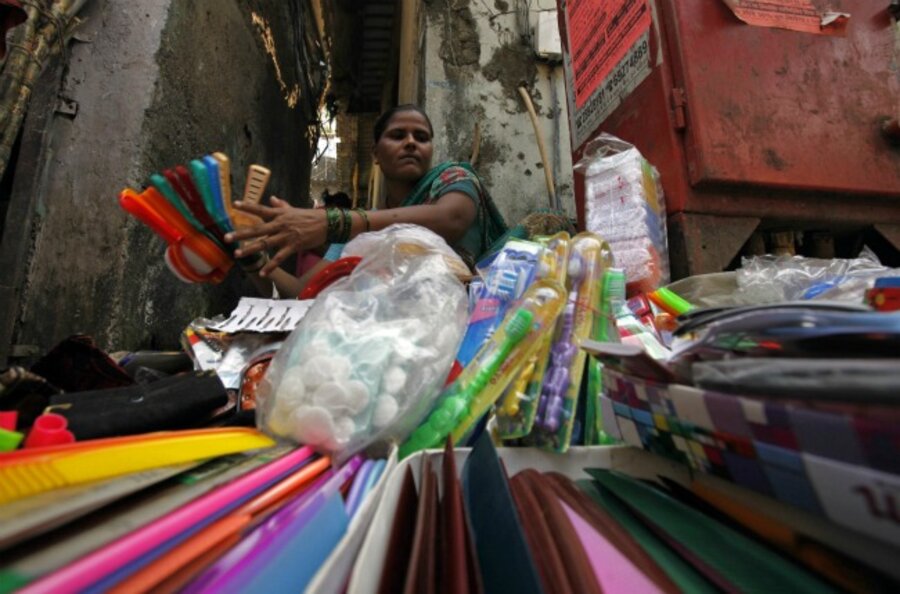Selling organs to pay off debt: Microfinance needs reforms
Loading...
| Washington
When Muhammad Yunus won a Nobel Peace Prize in 2006 for his work on microfinance with the Grameen Bank in Bangladesh, he would have been mortified to know that a version of his model would one day force his country’s poor into the organ trade.
At the time, microfinance (particularly the practice of giving small loans to the unsalaried poor with low to no collateral) was revered for its ability to “do good while doing well.” In other words, it enabled people to escape poverty while turning a profit.
In 2010, microfinance euphoria was dampened when aggressive money collectors drove more than 30 Indian farmers to suicide to escape their debt. Although regulations followed that outlawed such practices, last summer’s revelations of Bangladeshis selling kidneys to pay off loans highlight deeper flaws in microfinance’s traditional approach, and show once again that giving loans to the poor sometimes just exacerbates their plight.
Fortunately, governments and microfinance institutions are taking steps to reform the industry and provide the impoverished with a variety of financial services, including savings options, which better meet their needs. These institutions’ ability to continue those improvements will not only determine microfinance’s future but the well-being of aspiring households around the world.
The desperation caused by debt in Bangladesh makes the need for change even more urgent. When Selina Akter from Berendy village took out loans to start a vegetable farming business, she couldn’t have imagined what it would cost her to pay them back. When her business went through a bad streak, Ms. Akter was unable to meet the required payments and had to take additional loans from another microfinance nongovernmental organization. All told, she amassed 400,000 taka ($5,280) in debt.
As first reported by the GlobalPost in October 2011, to get out from under her loans, Akter had surgery. The 25-year old Bangladeshi received 220,000 taka ($2,676) for her kidney. To cover the rest of her loans, her husband, father-in-law and brother-in-law chipped in. By selling their kidneys. Experts estimate that the Akter family is just one of the many in Bangladesh who get caught up in a “web of loans,” with 250-300 people selling their organs each year for quick cash.
Although no one would deny that microfinance has helped countless entrepreneurial households find their way to self-sufficiency, it’s become clear that in some contexts loans – the traditional focus of microfinance institutions – are not appropriate interventions. As the World Bank’s Consultative Group to Assist the Poor puts it, “Microfinance is…inappropriate for the destitute.... Grants are a more efficient way to transfer resources to the destitute than are loans that many will not be able to repay.”
Even with households that are not destitute, studies show that loans are only helpful as part of a larger package of financial services that includes savings.
In the words of Nathanael Goldberg, director at Innovations for Poverty Action, “Randomized evaluations of microfinance are showing mixed results, with credit clearly not the panacea it has sometimes been made out to be, [and with] savings looking promising.” Last year's data from this group and others show that the combination of credit and savings is more effective in helping poor households than credit alone.
Luckily, the microfinance industry has not turned a blind eye to this critique. The 2012 State of the Microcredit Summit report, issued ahead of this year’s annual conference in Madrid, states that to help microfinance “recover its soul,” these institutions should “encourage savings.”
Participants at the 2011 European Microfinance Week endorsed the "SMART" campaign, which has as one of its core client protection principles the “prevention of over-indebtedness.” And Mr. Yunus’s own Grameen Bank, more than 20 years after its founding, loosened its rules and allowed savings accounts for clients.
In addition, national governments are stepping up in to help provide financial services to the poor, especially savings accounts that are much less profitable for the private sector.
Earlier this year, Fiji began delivering all government payments to savings-linked bank accounts. In Peru, newly appointed Minister of Social Inclusion Carolina Trivelli announced that all recipients of public benefits will be provided with bank accounts to promote financial inclusion. Similarly, in 2011 Chile launched the “Chile Accounts” program to connect poor household to banks so that they can more easily use government benefits to build wealth.
The organ trade in Bangladesh existed before microfinance came on the scene, and it will likely continue as long as people are in desperate need of funds. At the same time, stories of Bangladeshis selling organs to pay off debt support the growing consensus that the poor are in need of many financial services, including savings, and that loans can harm as much as they help.
Hopefully, with the support of progressive and innovative governments, microfinance institutions will be able to better strike a balance between doing good and doing well.
Vishnu Sridharan is a program associate with the Global Assets Project at the New America Foundation.







